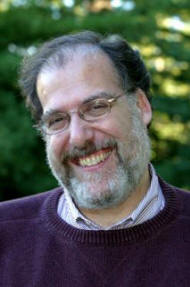
Handy Links
SLAC News Center
SLAC Today
- Subscribe
- Archives: Feb 2006-May 20, 2011
- Archives: May 23, 2011 and later
- Submit Feedback or Story Ideas
- About SLAC Today
SLAC News
Lab News
- Interactions
- Lightsources.org
- ILC NewsLine
- Int'l Science Grid This Week
- Fermilab Today
- Berkeley Lab News
- @brookhaven TODAY
- DOE Pulse
- CERN Courier
- DESY inForm
- US / LHC
SLAC Links
- Emergency
- Safety
- Policy Repository
- Site Entry Form

- Site Maps
- M & O Review
- Computing Status & Calendar
- SLAC Colloquium
- SLACspeak
- SLACspace
- SLAC Logo
- Café Menu
- Flea Market
- Web E-mail
- Marguerite Shuttle
- Discount Commuter Passes
-
Award Reporting Form
- SPIRES
- SciDoc
- Activity Groups
- Library
Stanford
Around the Bay
From the PPA Director: Evolution of the U.S. High Energy Physics Program
 Much like SLAC, the American high energy physics program is in a state of transition. With the shutdown of the SLAC's B-factory late next year and of Fermilab's Tevatron in either 2009 or 2010, the United States will be entering a period when there is no major accelerator facility for high energy physics research operating on American soil. This is happening at a time when there is much excitement in the field. It is widely expected that the turn-on of the Large Hadron Collider (LHC) at CERN will enable a plethora
of new discoveries, potentially including the long-sought detection of one or more Higgs bosons and conclusive evidence for the existence of supersymmetry. Parallel discoveries in particle astrophysics related to the mysteries of dark matter and dark energy may also greatly augment our current understanding of the structure and evolution of the universe.
Much like SLAC, the American high energy physics program is in a state of transition. With the shutdown of the SLAC's B-factory late next year and of Fermilab's Tevatron in either 2009 or 2010, the United States will be entering a period when there is no major accelerator facility for high energy physics research operating on American soil. This is happening at a time when there is much excitement in the field. It is widely expected that the turn-on of the Large Hadron Collider (LHC) at CERN will enable a plethora
of new discoveries, potentially including the long-sought detection of one or more Higgs bosons and conclusive evidence for the existence of supersymmetry. Parallel discoveries in particle astrophysics related to the mysteries of dark matter and dark energy may also greatly augment our current understanding of the structure and evolution of the universe.
Most American high energy physicists look to the International Linear Collider (ILC) to eventually provide the path for the U.S. to regain leadership in this field. The ILC can provide the opportunity to make precision measurements at the TeV scale—following up on the LHC discoveries to yield a detailed understanding of the anticipated new phenomena. Fermilab is one of three potential sites for this facility under consideration by the world-wide community. SLAC has been heavily involved in the R&D and preliminary engineering design efforts for the ILC, and this project is viewed as a key component of our future research program in the lab's Particle Physics and Astrophysics Directorate.
Yet the ILC may not move ahead as quickly as hoped. This past week, Dr. Ray Orbach, the Under Secretary for Science at the Department of Energy (DOE), provided cautionary advice to the high energy physics community about how rapidly the U.S. ILC program may be able to progress. Speaking at a meeting of the American Linear Collider Physics Group at Fermilab on Monday, Dr. Orbach reviewed the status of the ILC with respect to the DOE Critical Decision (CD) process. He indicated that the statement of mission need for the ILC (CD-0) will have to await the scientific results from the LHC, which are unlikely to be available until 2010. In the interim, the ILC program will have to remain in the R&D and pre-conceptual design phase, which will need to be supported financially by the international agencies through the development of formal agreements and commitments of resources. Orbach said he sees the establishment of agreements for such R&D work as the first step in the process of demonstrating international support for the project.
This suggests that the timescale for the ILC may be slower than had been hoped for. Dr. Dennis Kovar, who has just taken over from Dr. Robin Staffin as Head of the Office of High Energy Physics at the DOE, will be working with the community and the laboratories to map out a near-term plan for the field that will keep the ILC on the table, but also support smaller high-priority programs in the interim.
—Steve Kahn, SLAC Today, October 26, 2007